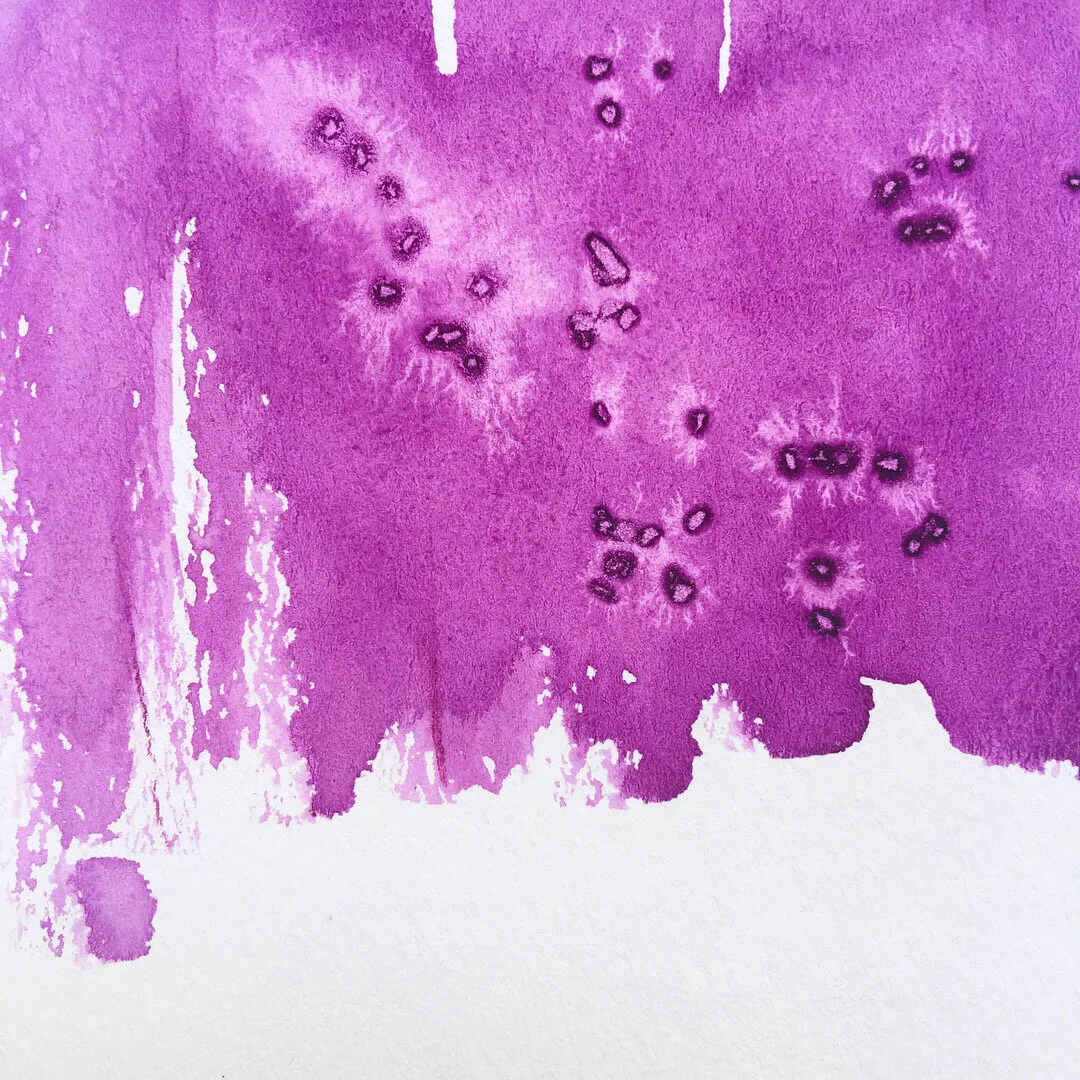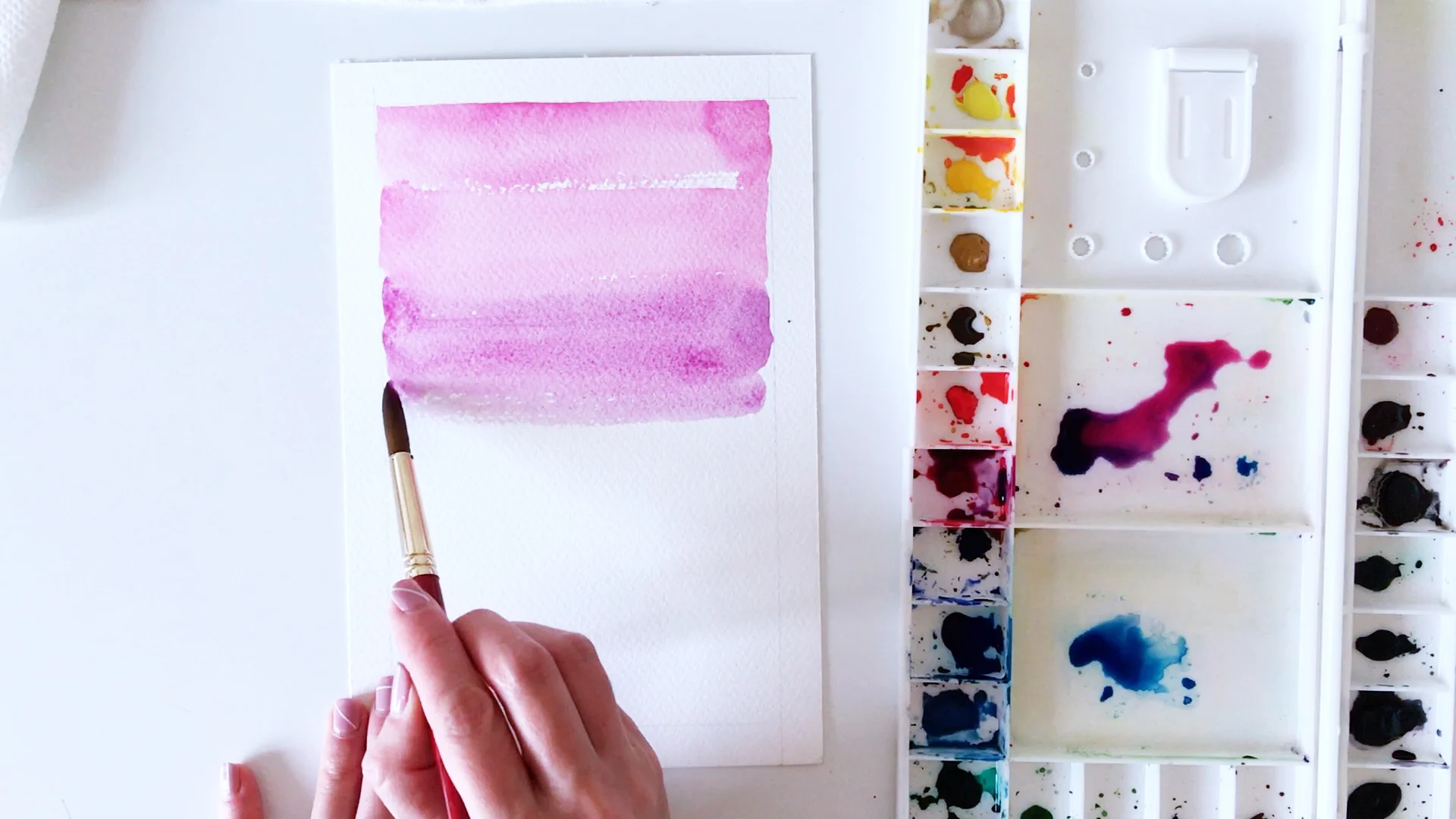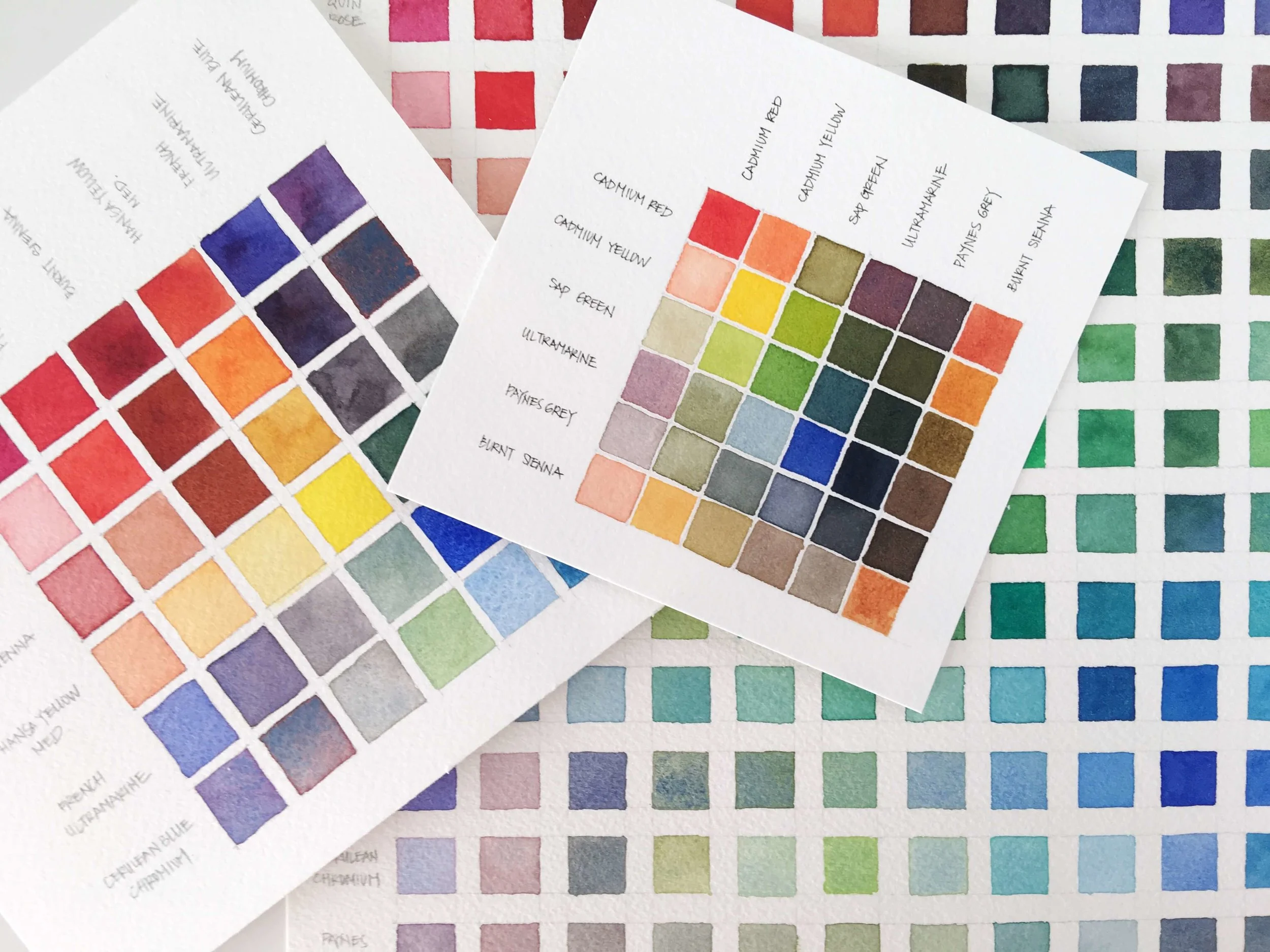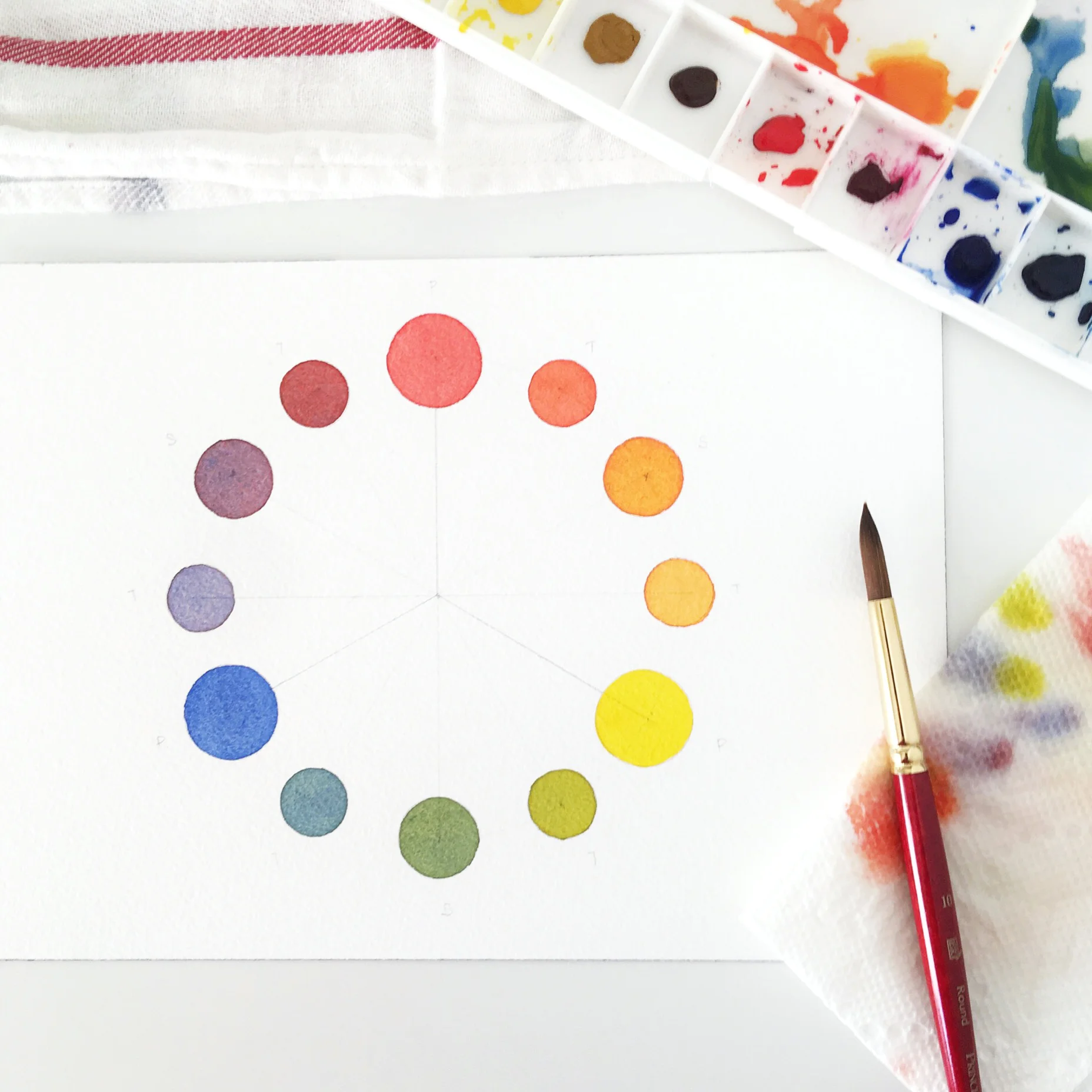10 Fun Watercolor Techniques To Try
If you're just getting into watercolors or you've been painting for a while, sometimes it's fun to just experiment with techniques that you don't normally use when painting. I usually only paint using the basic watercolor techniques (see #1-#3) , but some of these are really fun to play around with, even if it's not for a final painting.
I especially love playing around with experiments like this if I find myself at a loss for ideas or not wanting to sit down to paint any subject in particular!
So here's a quick round up of 10 fun watercolor techniques that you can give a try (if you haven't already!)
Watercolor Tutorial: Herringbone Pattern
When I decided to “doodle” this pattern into my sketchbook last year and record it, I had no idea that it would be so popular. I posted a video of it to Instagram and it has (for some crazy reason) been shared by quite a few of those viral video accounts.
I want to be on the record to say, I am the first person in line to agree that this pattern is by no means a crazy feat or even close to being a masterpiece. I actually came across a hilarious comment from someone responding on one of those video accounts that basically asked: “Why is everyone so amazed by this, it’s not like she’s Picasso.” I laughed and still can’t agree more!
3 Watercolor Brush Stroke Exercises to Practice Brush Control
I think of watercolors a little like modern calligraphy. It’s loose, there aren’t hard and fast traditional rules because it’s such an expressive and fluid medium. With watercolors, you can paint anything from a very loose abstract image to a super detailed photorealistic painting. No matter which style, however, there are still basic principles and techniques that we need to understand in order to be able to paint with watercolors.
One foundational skill in watercolors is understanding your brush, the strokes it can make, and how to handle it. In this post, I’m going to share 3 brush stroke exercises that you can do with a round tip brush to practice control get really comfortable with the strokes and shapes your brush is capable of
Gradient Watercolor Background Experiments
Hake brushes have been on my mind lately. I’m *this* close to buying one, it’s in my shopping cart on dickblick.com and I just haven’t let myself purchase it yet. If you don’t know what a hake brush is, they are large wash brushes that hold lots of water. In my dreams, I want to use it to prep a big sheet of paper with water so I can paint soft blue watercolor skies with fluffy clouds.
Until that happens I decided I should experiment with some gradient washes because it’s not something that I normally paint. These gradient washes make really nice backgrounds to letter on top of or can be scanned and used as backgrounds for digital designs too.
5 Types of Watercolor Charts: Overview
I know we can find examples of these color charts as visual images all over the internet but without some sort of explanation to accompany them, I found it pretty confusing! In fact, when I began studying them, what I thought was a basic color chart turned out not to be so basic after all.
Now that we’ve got them all sorted out in a blog series, I’ll summarize them each here with a photo, a name, and a sentence about why you’d want to study and paint them for yourself.
5 Types of Watercolor Charts - Type 5: Two Color Mixing Chart
If you’ve been reading since the beginning of this watercolor chart series, you may have noticed that each chart type is a little more involved than the last. Each one in the series takes more time to paint and also provides us more insight into our paints.
These last charts are probably the trickiest to paint of the 5 types, but are my favorite because they give you the most information about your color mixes.
5 Types of Watercolor Charts - Type 4: Color Mixing Chart
I think of color mixing charts as a combination of the basic color chart and a color wheel. You’re taking the paints in your palette (or a selection of them) and mixing them with each other to see what colors they make.
This is when you really witness the magic that is color mixing. With 6 colors, you can make 36 colors. With 12 colors you can make 144 colors. (In fact, you can actually mix MANY more than shown on the color chart, but we’ll take a look at how in the last part of the series.)
What I love most about these color mixing charts is having an organized sheet with a snap shot of colors your palette is capable of producing.
5 Types of Watercolor Charts - Type 3: Color Wheel
We’re in week 3 of this series, and today is probably one of my favorite (and easily the most photogenic) color chart of the series: the color wheel.
The color wheel is a great starting point to enter into color mixing and color theory - and where I think I first discovered how magical painting was when I was young. There’s nothing like taking two paints and seeing them mix to create a brand new color right before your eyes. It’s really like magic when you’re young. In fact, to be honest, I think I’m still awed by all the different colors I can make with just a few colors even now!
5 Types of Watercolor Charts - Type 2: Value Scales
Last week, I started a blog post series about 5 different types of watercolor charts beginning with the basic watercolor chart.
Like I mentioned, not all of these will technically be charts - today we're reviewing a type of scale. But whether they are charts or scales, I like to think of them all as part of the same family of exercises that help me understand the colors I'm working with better.
5 Types of Watercolor Charts - Type 1: Basic Color Chart
There’s a lot of information out there on how to create watercolor charts - the idea behind them all being similar: get to know your paints and learn how colors mix.
The thing is, I noticed when I was first starting that there were charts of all types, in different formats. They seemed to have different purposes and after some research, I figured out what they were all for and why there are helpful.
I’m going to walk you through the 5 Types of watercolor charts that I think are most typical AND useful in a blog post series. Some of them technically aren’t even charts, but we’ll get to that.










